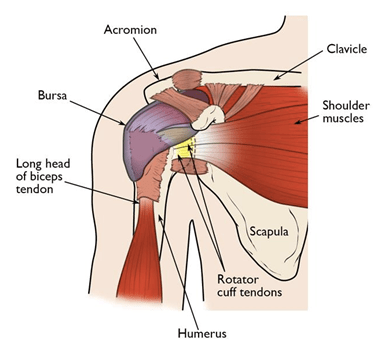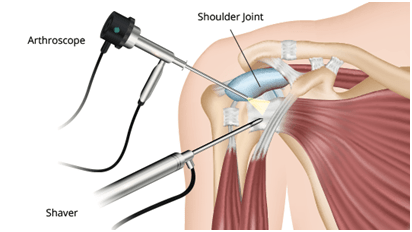Common Shoulder Conditions And How To Treat Them
Welcare Hospital prides itself on providing world class treatment to patients with shoulder injuries, among other musculoskeletal problems. The hospital boasts of a zero percent infection rate postoperatively and has been consistent in providing solutions for shoulder related problems among various other orthopaedic issues.
Welcare hospital is equipped with state-of-the-art facilities which provide for a smooth experience for patients undergoing arthroscopic procedures. Here are some frequently asked questions about shoulder injuries and their management –
What makes a shoulder joint?
Anatomically, the shoulder joint is made of the arm bone (the humerus), the collar bone (the clavicle) and the shoulder blade (scapula), along with muscles, ligaments and tendons. The joint itself is a ball and socket joint, which means that it helps the arm move in all the directions so any injury to the shoulder leads to a substantial limitation of day-to-day activity.


What are the different shoulder injuries?
Shoulder joint is prone to a number of injuries, the most common of them being Rotator Cuff tears and Frozen Shoulder. Other conditions like Rotator Cuff tendinitis, Shoulder Dislocation and Shoulder Arthritis are also seen.
What is a Rotator Cuff tear?
Rotator cuff is a group of four muscles that come together as tendons to form a covering around the head of the humerus. It attaches the humerus to the shoulder blade and helps to lift and rotate the arm.
When one or more of the rotator cuff tendons is torn, the tendon(s) no longer fully attaches to the head of the humerus therefore destabilising the joint.
Who is at the highest risk for Rotator Cuff tears?
Any action that puts strain on the shoulder joint like lifting heavy objects or falling on an outstretched hand can lead to a rotator cuff tear, which first begins as fraying of the tendons (known as a partial tear) and then to complete tear involving the muscle itself, if the strain is not removed or is repetitive.
Athletes are especially vulnerable to overuse tears, particularly tennis players and baseball pitchers. Painters, carpenters, and others who do overhead work also have a greater chance for tears.
The tear can also occur as a side effect of a shoulder dislocation or of fracture of the collarbone, or as a consequence of ageing since, with age, the blood supply to the cuff tends to decrease which impairs the ability of the muscles and tendons to repair themselves. Rarely, the tear could occur due to bone overgrowth, known as a bony spur, on the underside of the acromion bone. The bony spur impinges on the muscles and injures them every time the arm moves.
What are the symptoms of a Rotator Cuff tear?
If the tear is sudden, like due to a fall on an outstretched hand, it causes intense pain in the shoulder and inability to move the arm at all. If the tear is gradual, the first symptoms would be mild pain on lifting the arm over the head. Over time, the pain becomes worse, often occurring even at night and the arm movements become heavily restricted.
How can a Rotator Cuff tear be treated?
As a rotator cuff tear could be anywhere from mild to severe, patients are initially asked to take ample rest and analgesics (anti-pain medications). If the pain persists, steroid injections may be given. In cases where the tear is large or the blood supply is inefficient, a shoulder surgery is done to repair the injury. Surgery is also done if the injury has failed to heal after 12 months of trauma, or if the injury is a recent, acute one.
What is a Frozen Shoulder?
Another very common condition affecting the shoulder is Adhesive Capsulitis, usually called the Frozen Shoulder.


It is the inflammation of the capsule of the shoulder joint seen in people with diabetes, hypothyroidism, hyperthyroidism, Parkinson’s disease, and cardiac disease. It is also sometimes seen after a period of immobilisation following any shoulder surgery and can be prevented by starting physiotherapy of the shoulder as soon as possible, postoperatively.
How can a Frozen Shoulder be treated?
Since the most marked initial symptom is pain, treatment here also involves rest and analgesics followed by physiotherapy to regain the shoulder movements. A procedure known as hydrodilation, in which sterile fluid is injected in the shoulder joint to stretch the capsule, may be done when non-surgical methods fail. In severe cases surgery is preferred.
What is Shoulder Arthroscopy?
Diving deeper regarding the surgical options for shoulder injuries, Shoulder Arthroscopy has now replaced the conventional open surgery for almost all shoulder related procedures. Previously, open repair was the treatment of choice but it led to a high prevalence of infections and anaesthetic complications, along with postoperative stiffness in the joint and a long hospital stay.
Regarding an arthroscopic surgery, the patient is kept in the hospital for an hour or two postoperatively and then discharged, effectively making it an outpatient procedure and hence, the procedure of choice.
In Shoulder Arthroscopy a small camera, known as the arthroscope, is inserted into the shoulder joint and images are displayed on a television screen to guide the surgeon as to where to operate.
Since the instruments used in this procedure are thin and small, very tiny incisions are required, as opposed to big incisions in open repair.
On discharge, the patient is taught how to support his shoulder with a sling, and rest and analgesics are advised.


Shoulder arthroscopy has also successfully, and commonly, been used for bone spur (bone overgrowth) removal, repair of ligaments, removal of inflamed tissue or loose cartilage and repair for recurrent shoulder dislocation.
